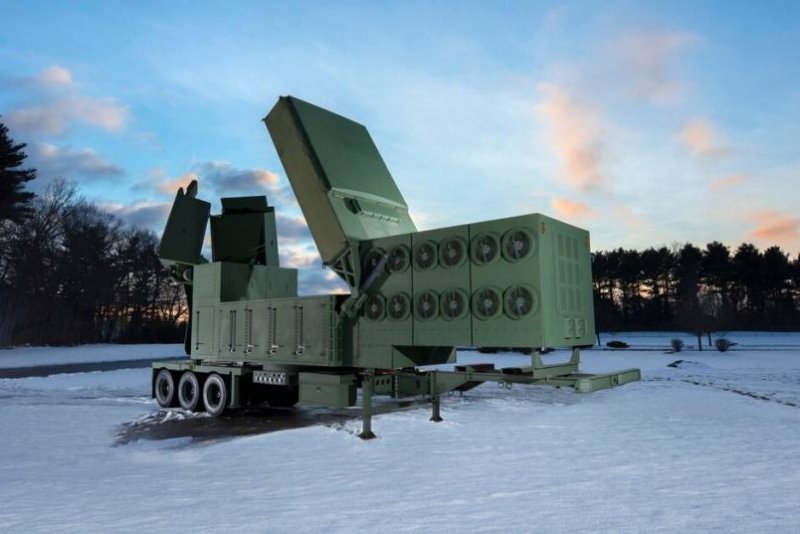Raytheon announced Friday that it has finished building the first radar antenna array for the U.S. Army's Lower Tier Air and Missile Defense Sensor. Photo courtesy of Raytheon
Feb. 21 (UPI) -- Raytheon announced Friday that it finished building the first radar antenna array for the U.S. Army's Lower Tier Air and Missile Defense Sensor, a next-generation radar intended to counter hypersonic weapons.
"Raytheon's employees and partners are focused on delivering the first LTAMDS by the Army's Urgent Material Release date because we know how important expanded battlespace coverage and other capabilities are to the men and women in uniform," Tom Laliberty, vice president of Integrated Air and Missile Defense at Raytheon's Integrated Defense Systems business, said in a press announcement. "Because we invested in cutting-edge radar technology and advanced manufacturing capability, we will meet the customer's critical milestones and get LTAMDS in the field rapidly."
In December, Russian officials announced that the country's first hypersonic ballistic missiles had been put into service.
Russian officials boasted that due to the ability of hypersonic missiles to travel at the speed of sound, they should be invulnerable to U.S. defense systems.
But the Pentagon has doled out millions of dollars over the last several years to counter hypersonic threats.
In December 2017, Northrup Grumman was awarded a U.S. Army contract to replace the branch's 50-year-old Patriot radars with LTAMDS systems, and earlier in February, Aerojet Rocketdyne received $12.1 million to develop anti-hypersonic technologies.
Raytheon is also working on hypersonic weapons for the United States. In March 2019, the contractor was awarded $63.3 million for hypersonic systems research, and in July the company and the Defense Advanced Research Projects Agency announced successful completion of design review for hypersonics.
The U.S. Army is expected to begin testing hypersonic weapons this year.















